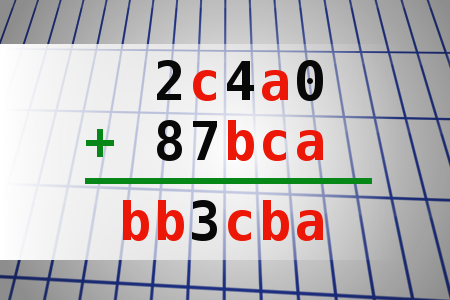Find number abc
If 2c4a0 + 87bca = bb3cba find number abc. Multiple solutions may exist.Correct answers: 33
The first user who solved this task is Nasrin 24 T.
#brainteasers #math

Saint George and the Dragon
April 23rd is St. George’s Day, named after St. George, the patron saint of England.
A weary traveler in 18th century England, hungry and tired, approached a roadside inn with a sign that read: "Saint George and the Dragon."
He knocked on the door. The innkeeper's wife poked her head out of a window.
"Any chance for a bite to eat?" he inquired.
The woman eyed his ragged, filthy clothes and yelled, "No!"
"May I have a pint of ale?"
"No!" she yelled back.
"Can I at least rest in your stable?"
"No!" she yelled once more.
The traveler tried again, "Could I kindly...?"
"What is it now?" the woman snapped, cutting him off.
"Would it be possible," he asked, "to have a chat with George?"

